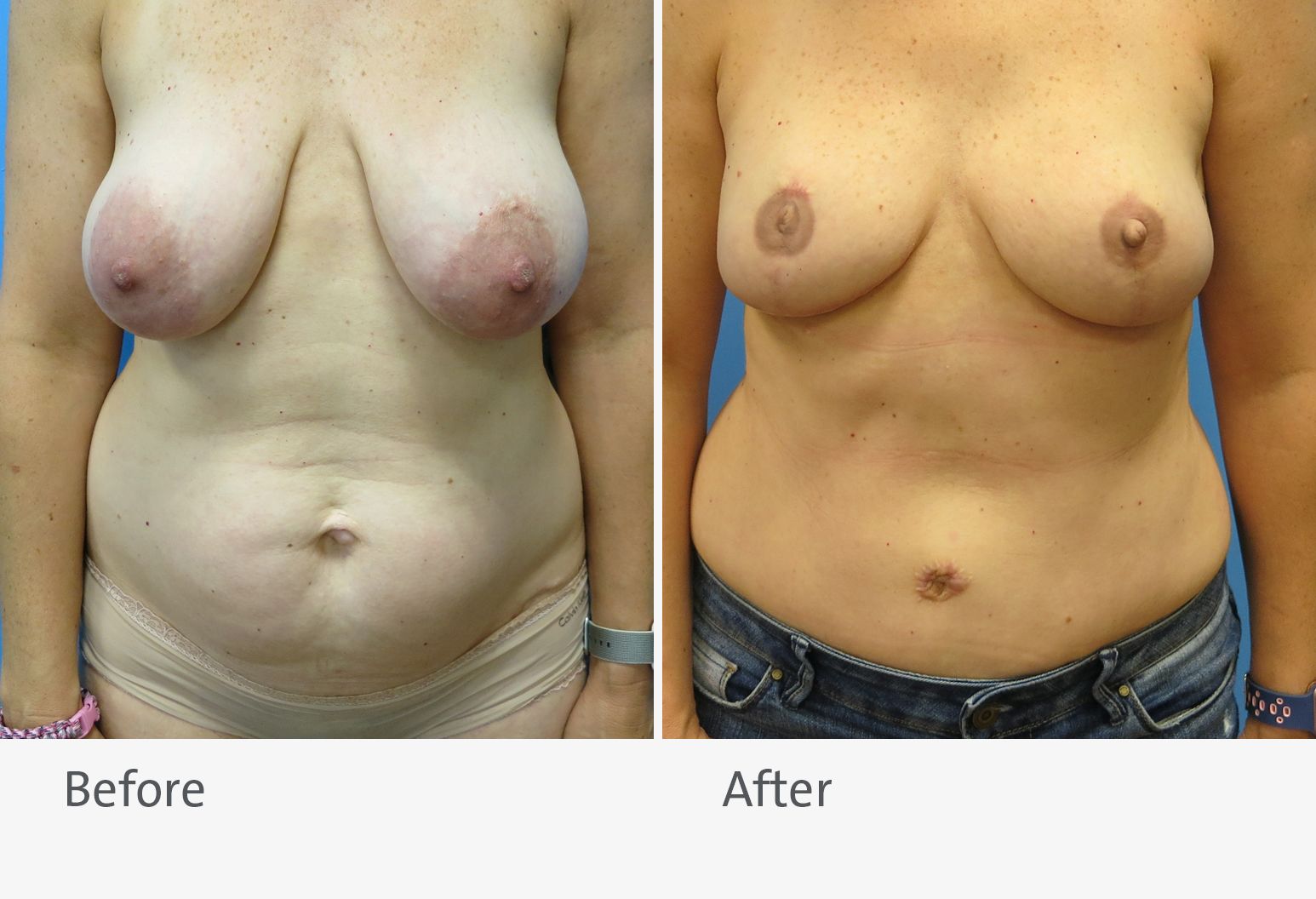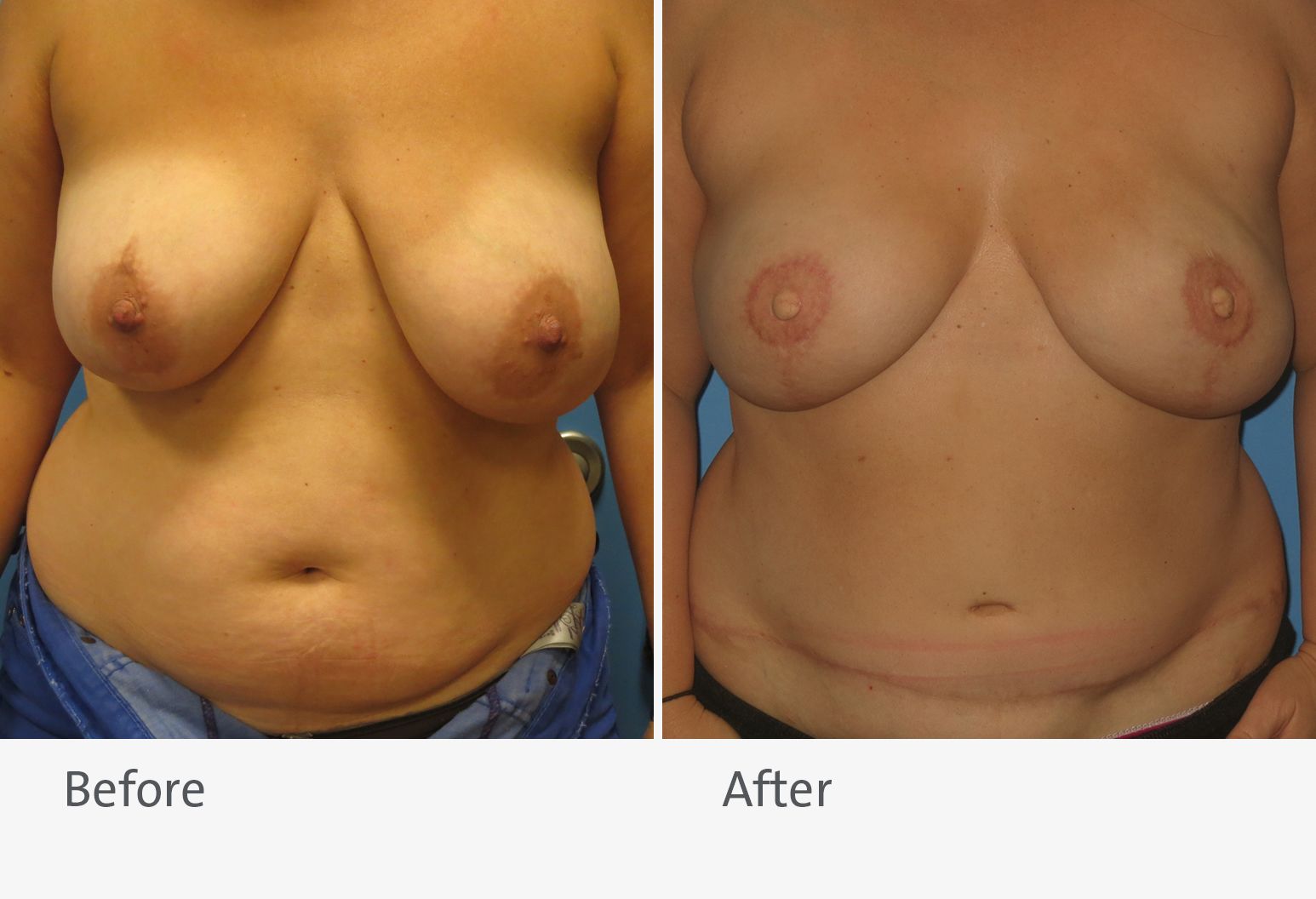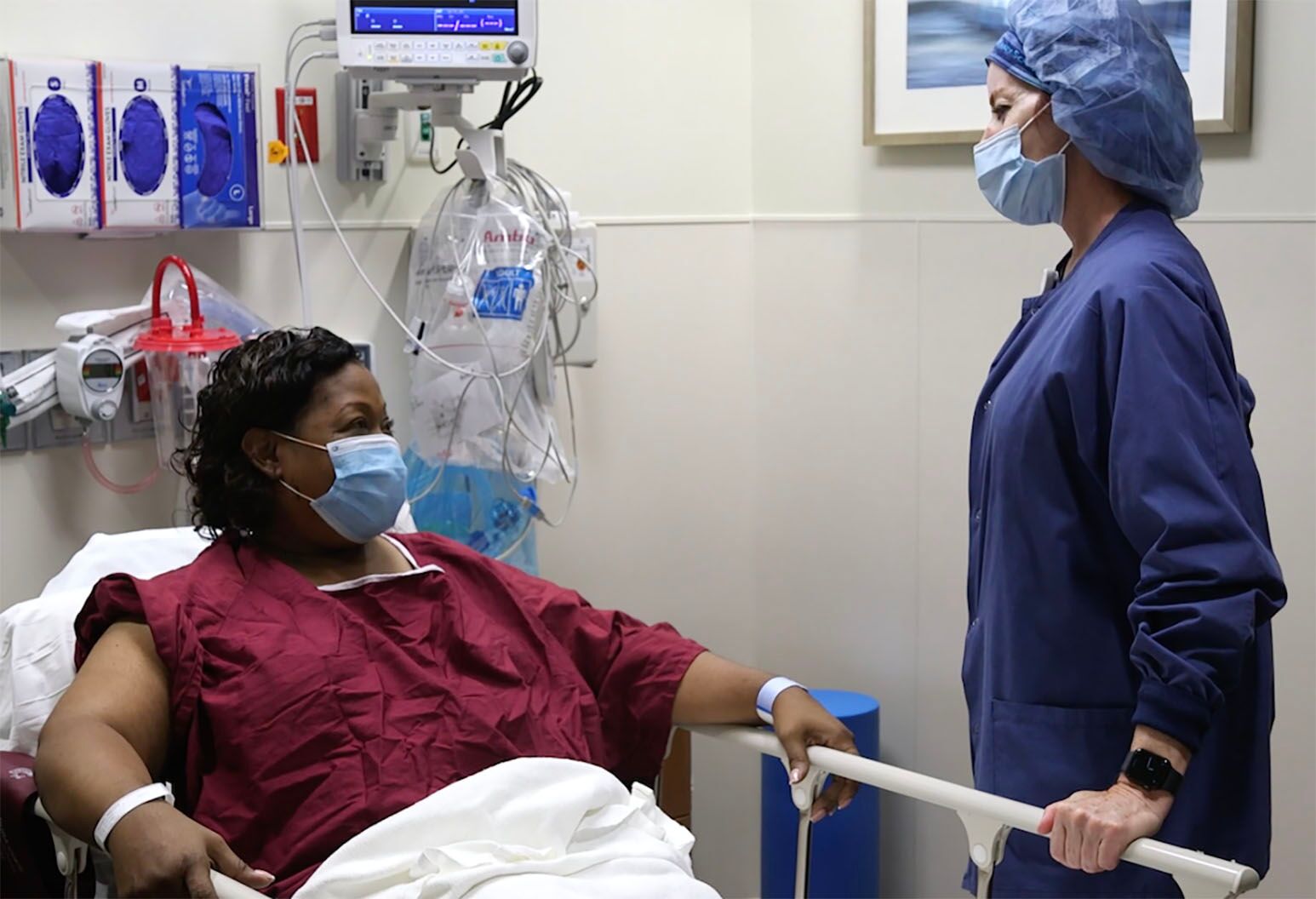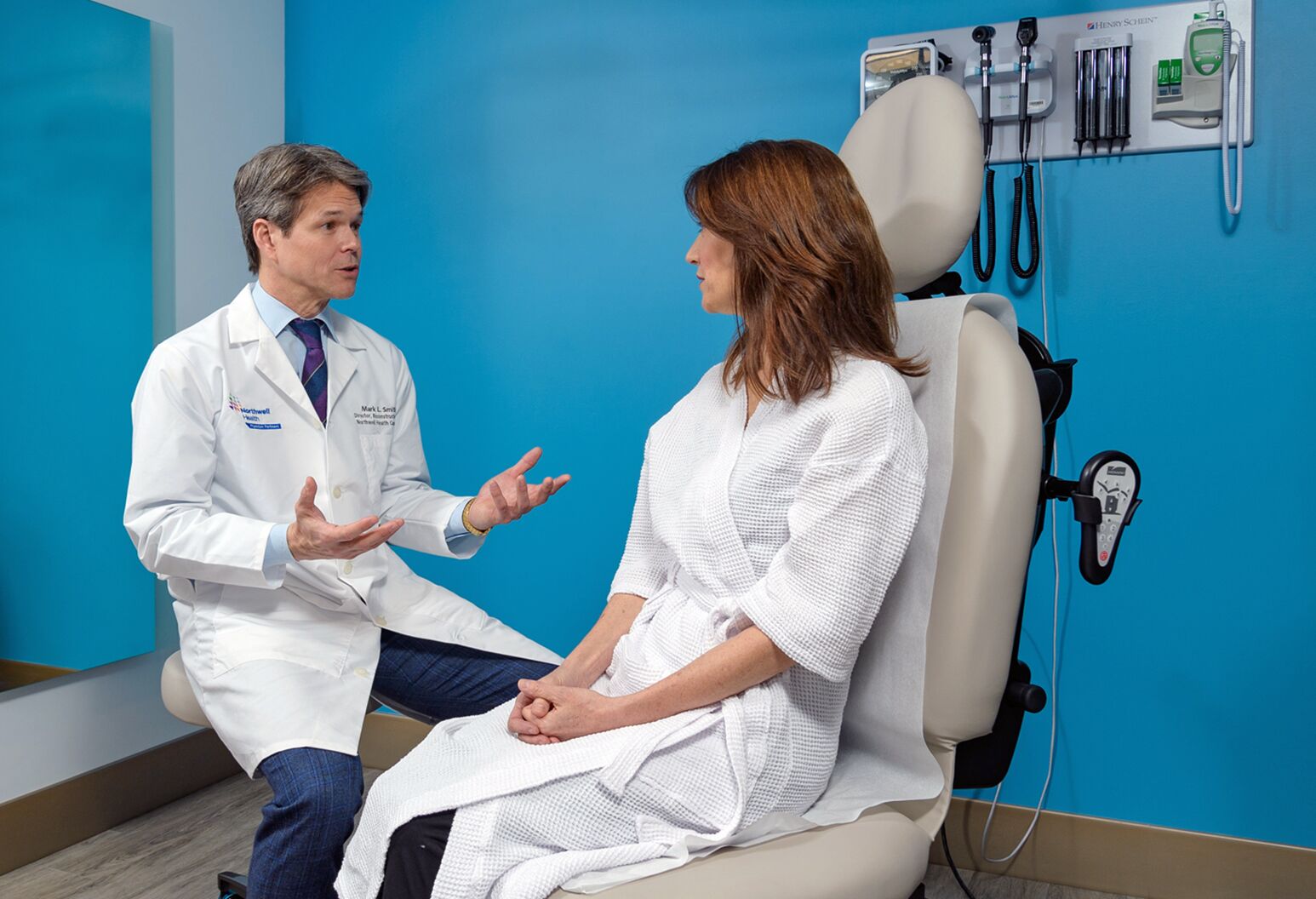Flap or natural tissue reconstruction
What is flap reconstruction?
Flap reconstruction, also known as autologous breast reconstruction or natural tissue reconstruction, is a procedure that transfers tissue from other parts of your body to recreate the breast. This procedure allows doctors to reconstruct the breast without the need for implants.
Our approach
At Northwell Health, we specialize in the latest methods of free flap breast reconstruction such as the deep inferior epigastric artery perforator (DIEP) flap, which is a muscle-sparing, minimally invasive option with faster recovery time, unlike the traditional transverse rectus abdominis muscle (TRAM) flap surgery . The DIEP flap procedure allows us to take a conservative approach to harvesting tissue without cutting into the abdominal muscle.
Natural tissue reconstruction with these kinds of perforator flaps is a more advanced procedure than breast reconstruction with implants. Plastic surgeons that perform this procedure must be trained in microsurgery and, as a result, many women at other locations are not offered this procedure as an option. The plastic surgeons at Northwell Health specialize in all types of breast reconstruction and offer all options to our patients.
Northwell is one of the first institutions to perform an even more innovative approach to the DIEP flap, which includes performing the surgery with robotic assistance. In a robotic DIEP flap procedure, the vessels used for the flap are retrieved intra-abdominally, which minimizes the disruption of the fascia and muscle, and allows for decreased risk of hernia, abdominal wall weakening, and pain.
Some women may not be candidates for the DIEP flap if they are very thin without excess tummy fat. For these women who don’t have much abdominal tissue, we offer alternative flap surgeries, such as the PAP (profunda artery perforator) flap or GAP (gluteal artery perforator) flap reconstruction from the buttocks or posterior thigh. Other flaps include the TUG flap, TAP flap and SIEA flap. You can learn more about the different types of natural tissue reconstruction here.
What to expect
Natural tissue reconstruction typically results in breasts that look, move and feel more natural than breasts reconstructed with implants. Results from this procedure last forever, without the need for revision or implant replacement surgeries later in life. Additionally, the results from natural tissue reconstruction tend to look and feel better over time.
Natural tissue reconstruction tends to be a single stage procedure unlike breast implant surgery. However, it is a longer surgery than breast implant reconstruction with a slightly longer recovery. To learn more about what to expect before and after surgery, click here.
We understand the choice to undergo breast reconstruction may not be an easy one. We’re here to put your mind at ease. Our experts share how advancements in plastic surgery ensure a faster recovery time and better results.
While breast reconstruction does not affect cancer outcome, there are still potential consequences of opting out. Before you come to a conclusion, consider this insight from our reconstruction experts.
Complications
With TRAM flap surgery, the older method of natural tissue flap reconstruction, there is a high risk of abdominal weakness and hernia because the muscle of the abdominal wall is cut. DIEP flap reconstruction minimizes this risk by leaving the muscle intact and only transplanting the fat and skin necessary, leaving an improved abdominal contour such as in a tummy tuck.
With all microvascular flap procedures, there is potential for losing the flap due to problems with the blood vessels. However, this surgery is highly reliable. The risk of flap loss is exceedingly low and occurs in only 1% of patients.
Recovery
Flap reconstruction typically requires a longer recovery period than prosthetic (implant) breast reconstruction—about four to six weeks. Minimally invasive perforator flap procedures such as the DIEP flap typically result in a recovery that is less painful than with the TRAM flap.
Patients typically stay in the hospital for two to three days and are up and walking on the very first day after surgery. Prescription pain medication is usually not necessary after the first week or two and patients generally feel well after three weeks. Once healed, patients can expect to return to their full range of motion, daily activities and normal exercise routines. There are often fewer long-term complaints than with breast implant reconstruction.
Our specialists follow the Enhanced Recovery after Surgery (ERAS) protocol. By using minimally invasive procedures, intra-operative ultrasound guided nerve blocks and advanced postoperative pain regimens, we ensure that our patients have shorter hospital stays, experience less pain and get back to their favorite activities faster.
Before and after gallery
Beautiful results you can see

Plastic surgery can change the way you look and feel. See the difference our doctors can make.

This procedure was done by Dr. Tanna.

This procedure was done by Dr. Kasabian.





